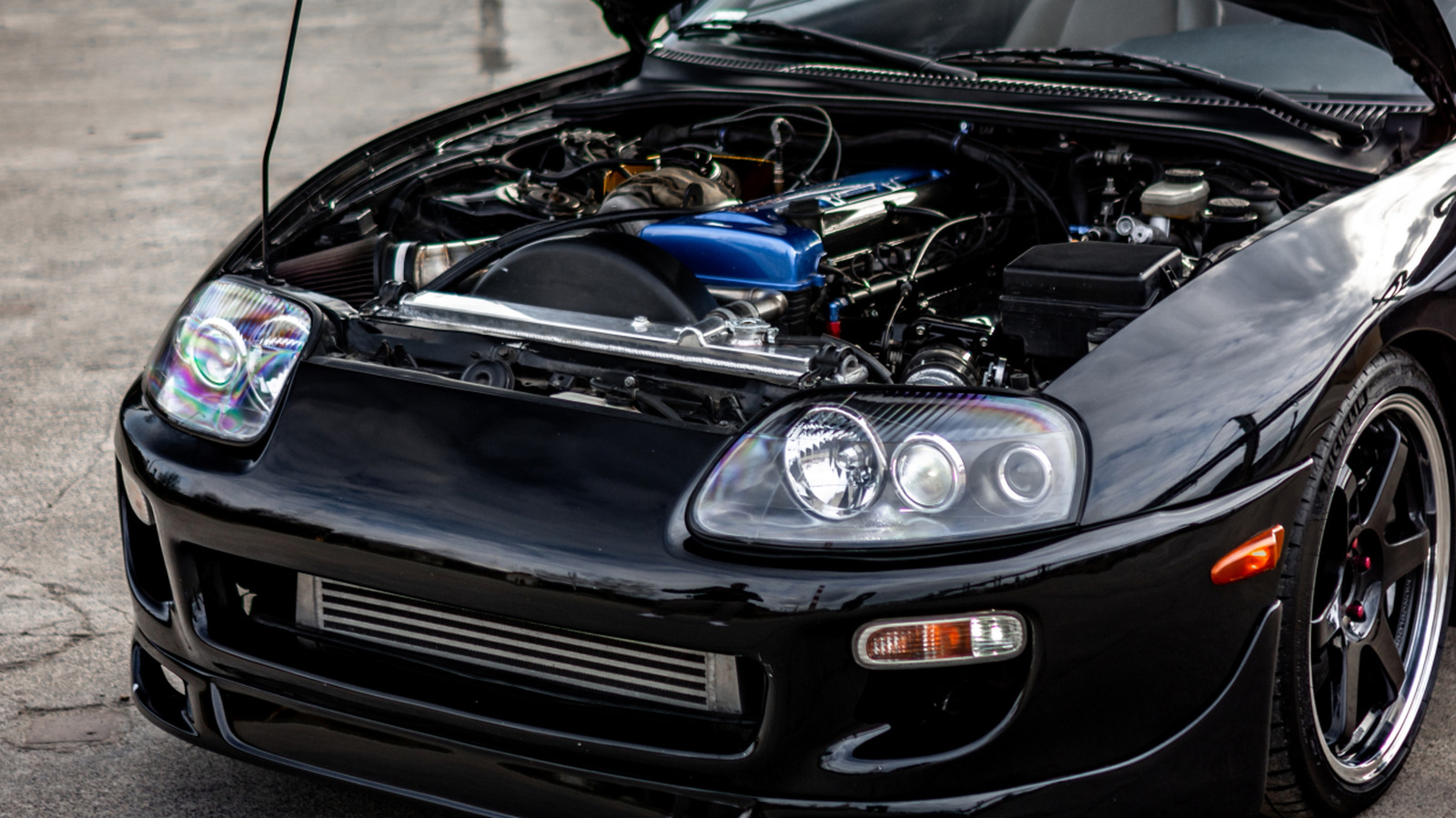Toyota’s 2JZ engine will go down as one of the most legendary motors in automotive history, and it’s arguably one of the key reasons behind the fourth generation Toyota Supra’s iconic status. The 2JZ-GTE engine in the Supra — the turbocharged variant — produced a respectable 320 horsepower and 315 lb-ft of torque out of the box. However, tuners in the ’90s soon discovered that they could extract two to three times more power with a few modifications, and some have even managed to push the engine to nearly 3,000 horsepower (that’s not a typo).
The 2JZ was a 3.0-liter inline-six engine, an evolution of the 1JZ, which was a 2.5-liter inline-six that powered various Toyota models, including the third-generation Supra. While the turbocharged 2JZ-GTE is the most sought-after — and famous for its immense tuning potential — naturally aspirated versions, called the 2JZ-GE and 2JZ-FSE, were also produced. This 2JZ-GE produced a modest 220 horsepower and 210 lb-ft of torque (meager compared to the 2JZ-GTE, of course), while the FSE — designed for efficiency — had direct injection and made 217 horsepower (220 PS, as per Toyota).
These naturally aspirated motors found their way into several other Toyota models, including a few luxury sedans and some oddball, limited-run cars that many outside Japan may never have heard of. While the Supra is the car most commonly associated with the 2JZ, several other Toyota and Lexus models also housed this legendary engine under the hood.
Toyota Aristo/Lexus GS
The 2JZ-GTE’s debut was in 1991, and it first appeared in the Toyota Aristo, two years before it was introduced in the Supra. The Aristo was a performance sedan for the Japanese domestic market and was offered with both the GTE (turbocharged) and GE (naturally aspirated) engines. The car was later introduced in the U.S. as the Lexus GS300, although only the naturally aspirated 2JZ-GE version was initially offered, with a V8 option added later. The American public never got to experience the ferocious GTE version in the GS300, which was available only in the Supra.
The Aristo was a performance-focused sedan, featuring an Active Rear Steering system, and it was one of the fastest production sedans in Japan at the time, and it was quicker than a BMW M5 in a straight line. Because it was sold exclusively in Japan, it was only available in right-hand drive. Despite it being an incredibly desirable sedan, the Aristo badge was retired by Toyota in 2005, with the Japanese company choosing to sell it under the Lexus brand.
Toyota Crown
The Toyota Crown has a rich legacy, going back to the ’50s, and has been sold in numerous countries around the world. The Crown was an executive sedan that exuded class (not to be confused with the 2025 Toyota Crown Signia) and was designed to provide occupants with a relaxing, luxurious ride. The ninth generation of the Crown, introduced in 1991, offered the then-new 2JZ-GE engine as an option, alongside its predecessor, the 1JZ-GE motor.
This continued through the next two generations, with the 11th generation also being offered with the direct-injection 2JZ-FSE engine. The next generation of the vehicle, introduced in 2003, did away with the legendary 2JZ, with the Japanese company instead offering the 3GR-FSE and 4GR-FSE V6 engines. The Crown also had a limousine version called the Majesta, which also had the 2JZ plonked into its long hood, while also available in a V8 engine.
Toyota Origin
The next car on the list, the Toyota Origin, is a quirky, retro-looking model that would have fit perfectly in the 1950s or 1960s, rather than the 2000s, when it was launched. The Origin paid homage to the original Toyota Crown introduced in the 1950s, incorporating design elements such as the front grille and vertical taillights from the 1955 model, while also drawing inspiration from it for its suicide doors. The car was special in many ways, as it was built to commemorate Toyota’s production of 100 million vehicles, with just over a thousand units manufactured by Kanto Auto Works. It’s the same company that then produced the top-of-the-line Toyota Century luxury sedan.
What made the car even more special was that it came with the 2JZ-GE, albeit in a slightly tamer state of tune, producing 211 hp and 217 lb-ft of torque. While it may not seem a lot, that is significantly higher than the roughly 47 horsepower produced by the original Crown it was inspired by.
Toyota Progrès
No, that’s not a typo. That’s exactly what Toyota intended to call the Progrès, which means “progress” in French. If the name wasn’t strange enough, the Progrès lived up to it as well. The Progrès, launched in 1998, was a premium sedan based on the second-generation Aristo, featuring an elegant cabin with leather seats and wooden trim. But its looks seem quite polarizing, with the front end of the car resembling an ugly love child of a Cadillac sedan from the 2000s and the Jaguar S-Type of the same vintage. The rear, though, was quite plain and straightforward with square taillamps.
It also shared its underpinnings with another car on this list, the previous entry, the Origin, which was derived from the Progrès. Like the Origin, the Progrès was also powered by the 2JZ-GE, despite Toyota touting that the car was designed for comfort, much like the Crown. The naturally aspirated engine did duties on the NC300 variant of the car, making 212 horsepower and 217 lb-ft of torque, while the smaller 1JZ-GE was under the hood of the NC250 version. The Progrès had just one generation, with sales beginning in 1998 and discontinued nearly a decade later in 2007.
First Appeared on
Source link












